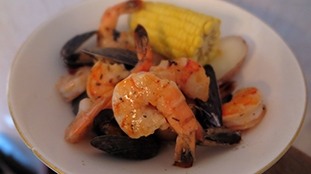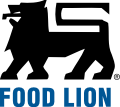Seafood Sustainability: Support the Future of our Waters
March 27, 2018 | Food Lion


Seafood Sustainability: Support the Future of our Waters
April, or Earth Month, is a time we all think a little bit more about the world around us and a great opportunity to learn more about a sustainable food supply and preserving our waters for future generations. We need safe, healthy and tasty food, produced in a sustainable and efficient way. Did you know that 70 percent of the world covered by water, yet only 2 percent of the world’s current food supply comes from the ocean?
Seafood is an important part of our diets, providing essential nutrients and – if sourced in a responsible way – one of the most sustainable proteins on the planet. But what does that mean, “sourced in a responsible way” and how can you help?
What Does Seafood Sustainability Mean?
Sustainable means that seafood has been caught or farmed with minimal impact to the environment. To be responsible stewards of the ocean, we need to make sure we are harvesting what we need today but that it will also be available long into the future. We work with the Gulf of Maine Research Institute and our existing supply base to make continual and incremental improvements in harvesting methods that decrease bycatch, promote distribution methods that decrease food miles, and improve handling – all of which enhance the quality of seafood products.
Know that Food Lion has a quality and sustainability practice in place to guarantee that all of our seafood across the store comes from responsibly harvested sources, ensuring long-term sustainability of our oceans for generations to come. Food Lion (and all the banners in Delhaize America) was the first major supermarket in the country to offer only seafood products that are fully traceable back to the wild fishery or farm – and only coming from sources we can verify are managed by competent authorities and that use a science-based approach to their management practices. Customers can email our seafood expert to find out from where a particular item originates.
Here are some additional ways you can know more about what you are purchasing:
- When at the store, look for a trusted certification such as Certified Sustainable Seafood from the Marine Stewardship Council or Best Aquaculture Practices administered by the Global Aquaculture Alliance.
- You can also download the Seafood Watch app from the Monterey Bay Aquarium or visit FishWatch.gov, both of which list sustainable seafood choices based on where the fish is from, how it was caught and other factors.
Farmed and Wild Are Equally Important
Simply, Americans would be in better health if we ate more seafood, but the only way to achieve that is through a combination of traditional wild harvest and aquaculture, or farming. A sustainable seafood supply must rely on both harvest sources. And this isn’t a new concept: ocean explorer Jacques Cousteau famously said, “We must start using the sea as farmers instead of hunters. That is what civilization is all about – farming replacing hunting.”
Fish and shellfish farming has the potential to provide an affordable and consistent supply of seafood to more people while taking pressure off wild capture fisheries. It has many benefits beyond just providing a healthy meal, these include the recovery of natural fish populations, improving indigenous food supplies, increasing the diversity of available seafood products, and providing a healthier alternative to land-based animal protein.
Aquaculture has a lower environmental impact than other types of animal-based farming. When it comes to your choice in proteins across the store, sustainability may not be the first thing you think about when purchasing food for your week. However, just chew on these facts for a while as you plan your family’s meals. There are limited natural resources such as land, water and energy. The average cow eats 8 to 9 pounds of feed and 8,000 liters of water to produce 1 pound of meat for us to consumer. Fish, however, are cold blooded so don’t waste energy warming their bodies and swim in water but don’t really need to drink much of it, therefore about 1 pound of feed produces 1 pound of meat.
Here are some quick facts to consider for farmed or wild seafood:
- Both farmed and wild seafood are healthy and safe to eat.
- The two main types of seafood farming are marine, which is net enclosures in the open ocean or in tanks on land, and freshwater, usually man-made ponds.
- In the U.S., the most common farmed species include oysters, clams, mussels, and shrimp, and fish such as catfish, trout, salmon and black sea bass.
- Farming fish, shellfish and even seaweed helps produce food while restoring habitats, replenishing wild stocks, and rebuilding populations of threatened and endangered species.
Support Responsible Seafood: Try Something New
Another simple way to contribute personally to seafood sustainability is to try something new. To help alleviate the potential overfishing pressures from the top three species – shrimp, salmon and tuna, which make up more than 50 percent of what we eat – try one of the 500 other species commercially available.
Scallops, mussels and oysters, for example are delicious and have a great environmental story. Especially along the Eastern Seaboard and the Chesapeake Bay, conservationists have turned to these mollusks and bivalves to help preserve natural habitats. They are filter feeders, so as they “eat” they are cleaning their surrounding waters. Farming of these species has grown significantly over the past two decades, and are extremely efficient as they do not require many resources to produce a large amount of lean protein.
Fun facts:
- Oysters filter 50-60 gallons of water a day – and they are pumping iron, too! Well, at least they are providing it in abundance. A 4-ounce serving of oysters has 60 percent of your daily iron needs — or if you’re just enjoying an appetizer, it’s about 4 percent for each oyster.
- Clams have more vitamin B-12 per serving than any other food — 1,868% of the daily value, to be exact. B-12 keeps nerves and blood cells healthy, balancing mood and fighting fatigue.
Feature Recipes:

The secret to a fantastic seafood boil is good, flavorful cooking liquid and starting with stock gets you halfway there. Chili flakes, bay leaves, and celery seed make this recipe sing, but you can always substitute with other things at home, like Old Bay seasoning or even cumin.








Create Your Display Name